Poplars, as the name suggests, is based on trees and yet, the artist has used his considerable skill as an Impressionist painter to render them in a completely new and engaging way. Monet was an extremely prolific painter who used nature and his perceptions of the natural world a lot in his paintings. He used Impressionism to express the impact that water, mountains and even grass had on his thoughts. Each painting reflects the beauty of his surroundings and some may case viewers to feel a sense of peace. Monet shows the poplars at different times in their lives.
While people sometimes pass trees without noticing them, they do go through changes in the same way that other living things do and these are most obvious during different seasons of the year (see also his Haystacks series). The artist may have made an effort to capture these changes because they reminded him of the changes all people go through. Each viewer may be inspired to think about different seasons in their own life. As an experienced painter, Monet does everything to change the visual mood and break the dreariness of the even trunks. To begin with, the forefront is conveyed in a left-inclining viewpoint, so that each tree shows up somewhat shorter than the former one. This technique infers a vanishing point at the far left.
It then veers to one side, taking the viewer's eye further into space. The treetops frame a band in a vast "S". This partitions the sky. Still, the linearity of the arrangement is very stark, practically gymnastic now and again and doesn't generally make for a smooth survey. Sometimes all that is left as a record of the way things were is a photograph or painting. This is often true for the natural landscape and artists have an important role to play in preserving the beauty of the natural world for future generations to enjoy. The "Poplars" series ensures that these trees will never be forgotten. Monet in a way has become an environmentalist, through his love for the water lilies and poplars in his environment.
In the late spring of 1891, Monet started to paint the line of poplar trees seen in the series. They lined the waterway close to his home at Giverny. When Monet discovered that the poplars on the Epte stream were to be felled, he paid for them to be left standing. While he could not delay the event forever, they remained standing long enough for him to paint them. The trees were sold for timber, yet Monet's arrangement with the buyer allowed him to keep keep on painting the trees through the early winter. Monet painted a portion of the poplars from the riverbank and others from a pontoon uniquely equipped with furrows to hold various canvases. Monet painted twenty-four photos of the poplars from his floating studio. This is why the perspective seen in the "Poplars" series varies a great deal.
Like the Haystacks series, the Poplars were initially displayed as an arrangement. Fifteen were shown in Paris in 1892. The paintings mirror the view at various seasons and times of day. Monet's endeavors to record the scene were so demanding, one companion announced, that the craftsman in some cases had just seven minutes to chip away at a specific canvas before the daylight moved. One can only imagine what it must have been like to paint from a boat. It would have ensured that the artist could get a different sense of the trees and be constantly challenged. One specific painting is recognised by the solid vertical nearness of three tree trunks in the forefront, counterbalanced by a crooked line of trees that winds along the riverbank out yonder.
Energetic and slightly askew brushwork in the reeds covering the riverbank and in the leaves of the subsiding trees seem intended to make each viewer get the sense of a blustery day in fall. Poplars were a strong topic and a good choice on Monet's part. The artist depicts a portion of the trees as bare and wire-like. They seem unable to pack their blossoming coverings into the composition. Truth be told, when joined with their reflections the trees look like a lattice of jail bars. The craftsman, an Impressionist who is second to none, may have felt the weight of the time restrictions placed on him as he rushed to complete the paintings before the trees were cut down. In a sense, the trees were trapped or confined with only a short space of freedom available to them. The Impressionist gives careful consideration to this.
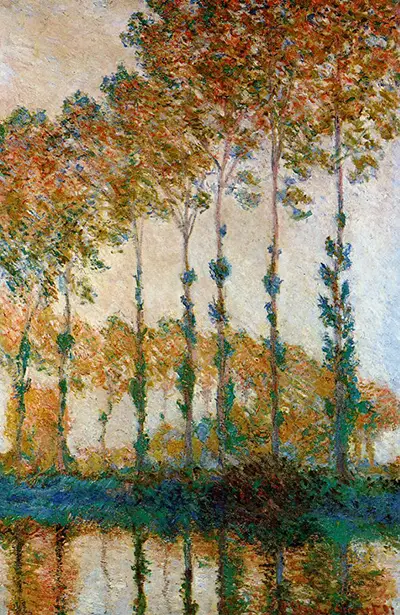
 Claude Monet.jpg)
, 1891 Claude Monet.jpg)
 Claude Monet.jpg)
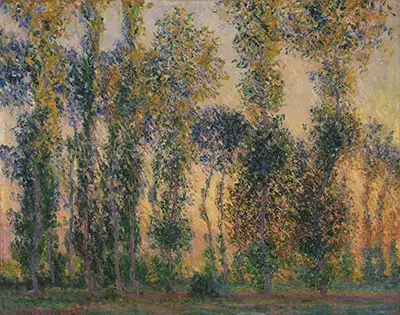
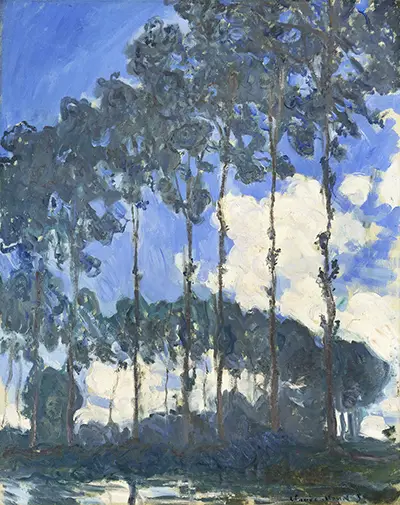
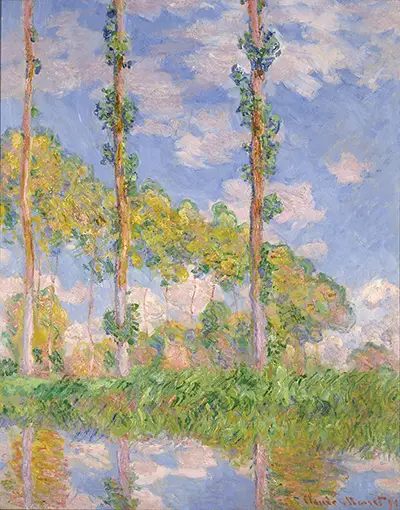
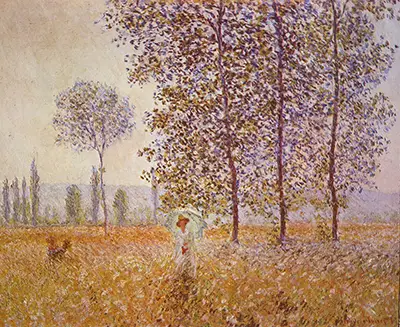
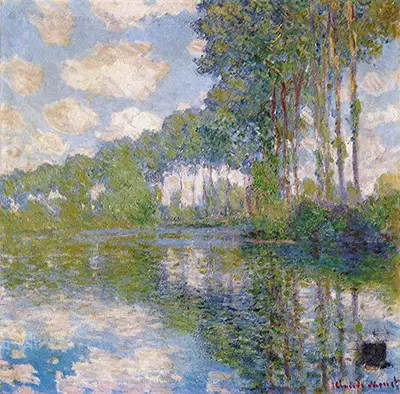
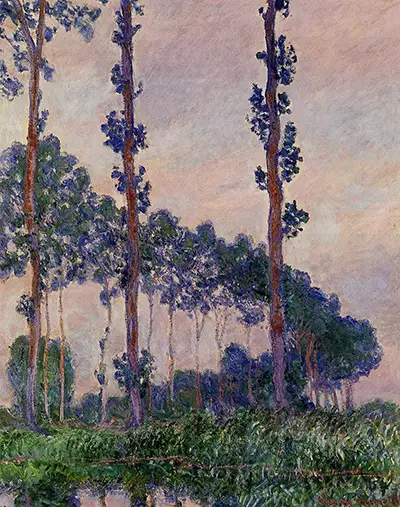
 Claude Monet.jpg)

